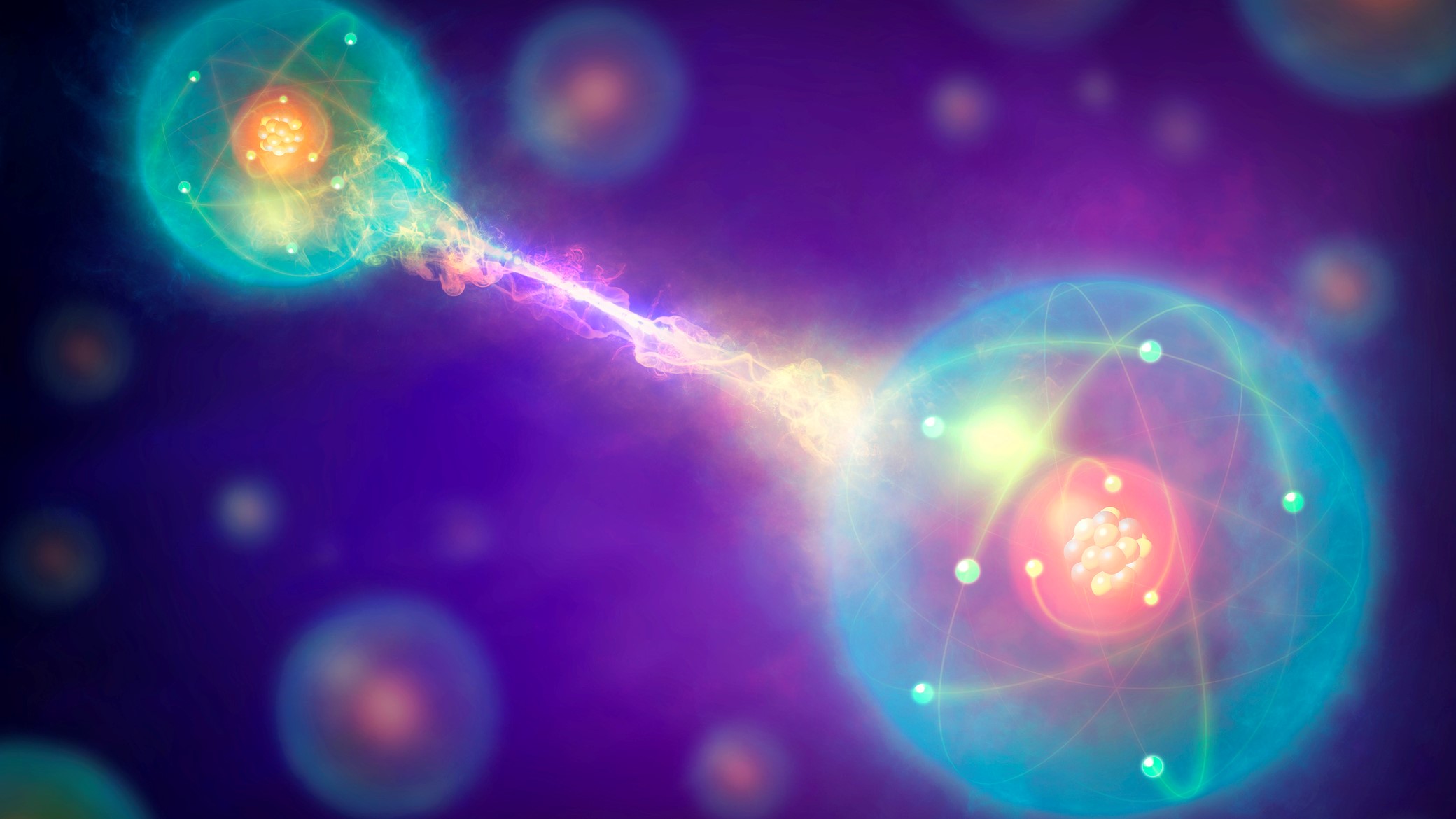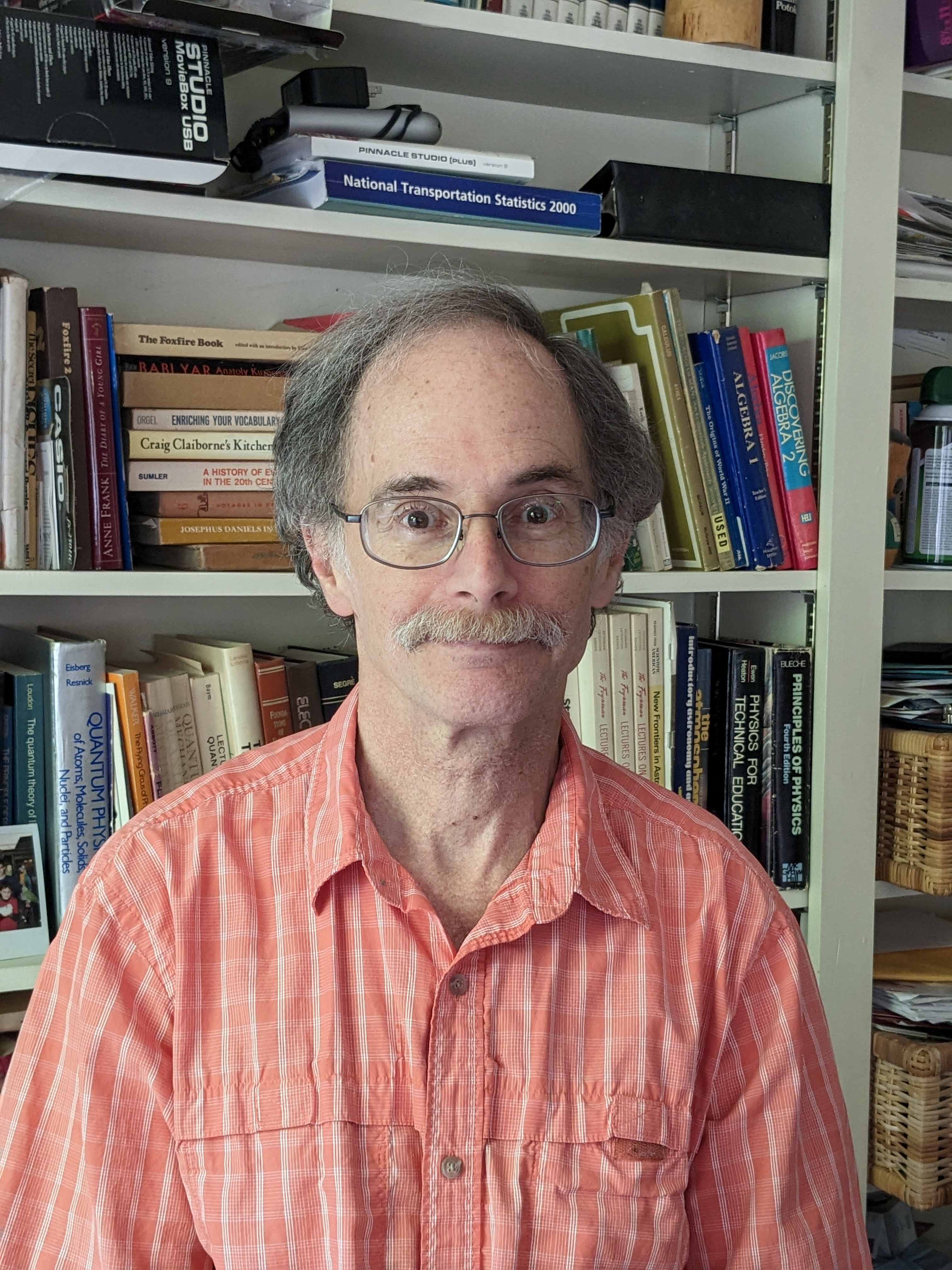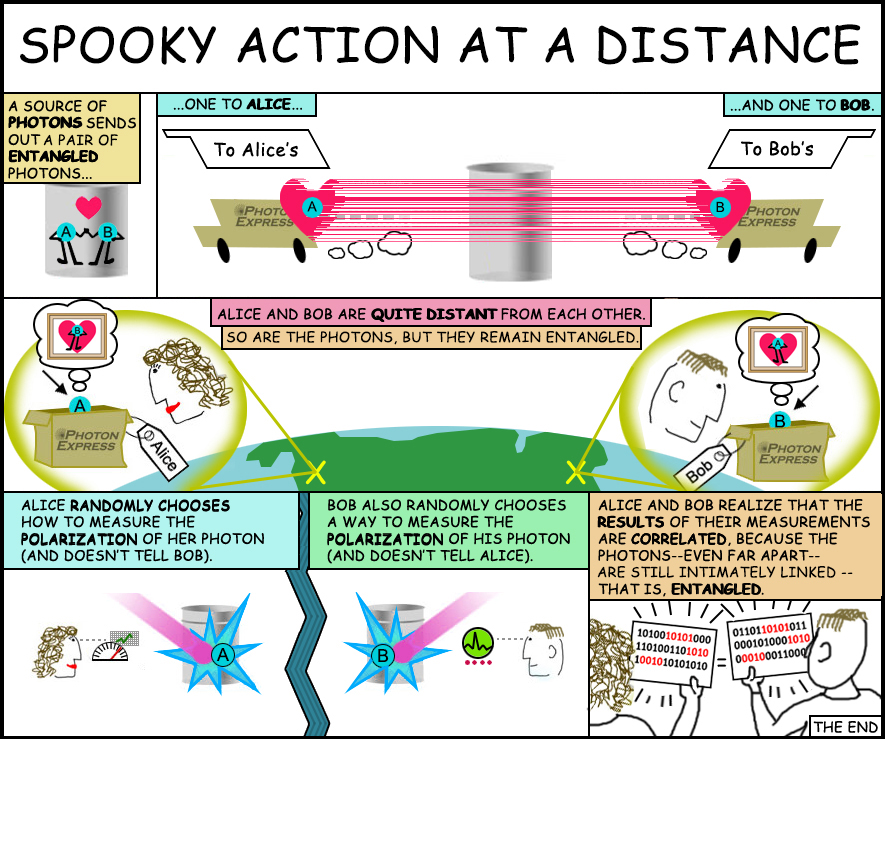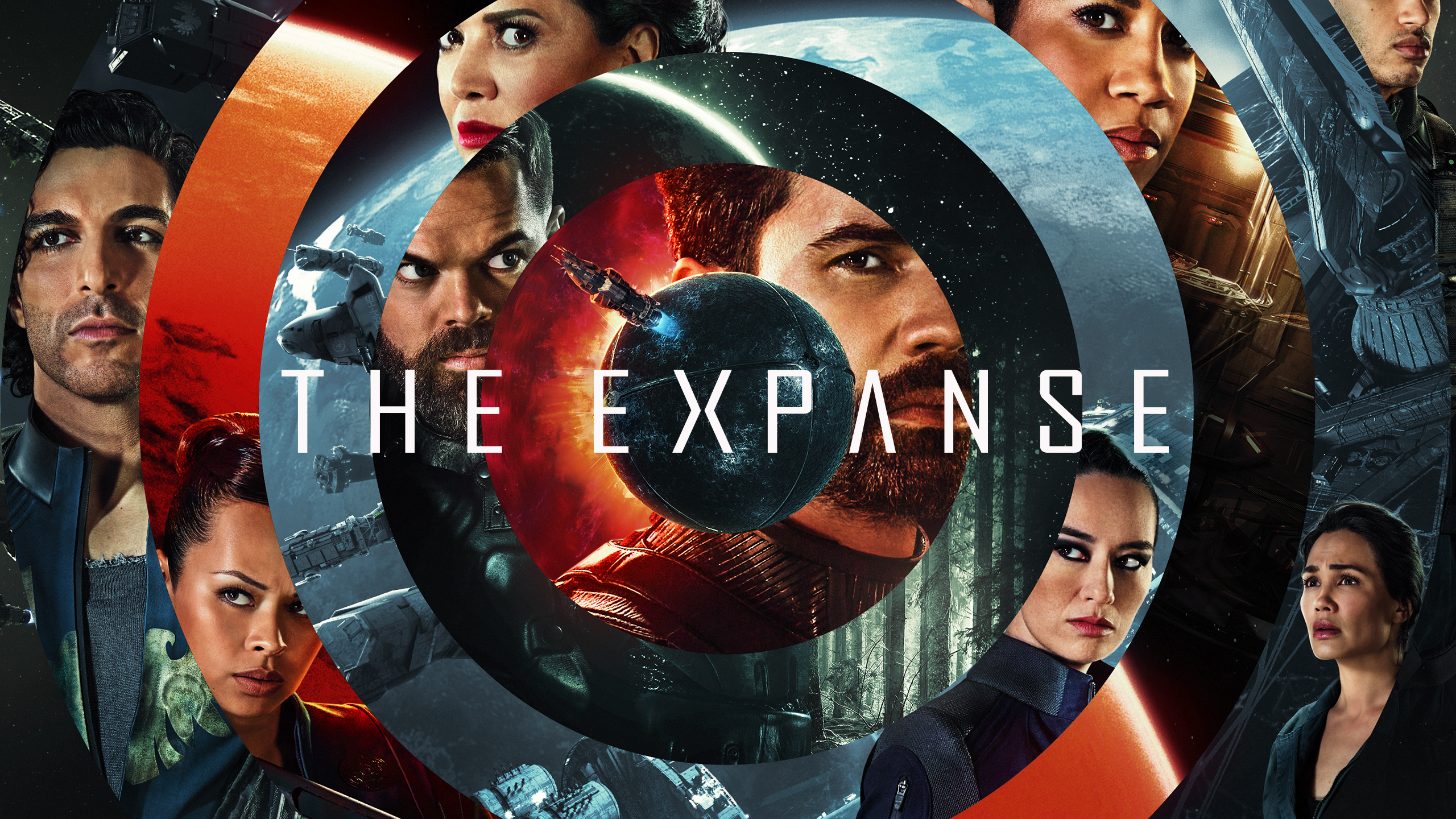What is quantum entanglement? The physics of 'spooky action at a distance' explained

Quantum entanglement occurs when two subatomic particles become linked in such a way that their properties remain connected, no matter how far apart they are. A change to one particle seems to instantaneously influence the other, even if they are separated by billions of light-years.
In 1964, physicist John Bell formulated what became known as Bell's Theorem, showing that if quantum mechanics is correct, such correlations cannot be explained by any hidden local variables. This idea challenged classical physics and built upon earlier doubts expressed by Albert Einstein, who famously called entanglement "spooky action at a distance." Einstein believed that no information could travel faster than the speed of light, but entanglement experiments suggest the universe doesn't always play by the classical rules.
Quantum entanglement FAQs with an expert
We spoke with Alan Migdall, a fellow at the Joint Quantum Institute at the University of Maryland and leader of the Quantum Optics Group at the National Institute of Standards and Technology (NIST), to help explain how quantum entanglement works.
What is quantum entanglement?
Quantum entanglement is when a system is in a "superposition" of more than one state. But what do those words mean? The usual example would be a flipped coin. You flip a coin but don't look at the result. You know it is either heads or tails. You just don't know which it is. Superposition means that it is not just unknown to you, its state of heads or tails does not even exist until you look at it (make a measurement). If that bothers you, you are in good company. If it doesn't bother you, then I haven't explained it clearly enough.
You might have noticed that I explained superposition more than entanglement. The reason for that is you need superposition to understand entanglement. Entanglement is a special kind of superposition that involves two separated locations in space. The coin example is superposition of two results in one place. As a simple example of entanglement (superposition of two separate places), it could be a photon encountering a 50-50 splitter. After the splitter, the photon could be In path A, or it could be in path B. In this case, the superposition is between
a photon in path A and no photon in path B.
and
no photon in path A and a photon in path B.
As a normal human being, you think that it is in just one or the other, and it is just that you don't know which. But in fact, it is in both, until you actually measure it. Again, that normal human being wants to say that if I measured it and found it in path A, it was in path A even if I hadn't measured it. But making that assumption gets you into trouble. Assuming the particle has that definite characteristic before you actually measured it, leads to measured results that are just not possible.
How does quantum entanglement work?
What is an example of quantum entanglement?
An example of quantum entanglement that I work with involves a light source that emits two photons at a time. Those two photons of a pair can be entangled so that the polarizations of the individual photons can be any orientation (i.e., random), but photons of a pair always have matching polarizations.
What is polarization? The polarization of light depends on the electric field of the light wave. As the light travels from point one point to another, its electric field will oscillate transversely to that propagation direction. It might oscillate in the vertical plane, in the horizontal plane or any direction in between.
Back to those entangled pairs. So, if I measure the polarization of photon A to see if it is polarized horizontal or vertical, I get an answer and find it to be, this time, vertical. Entanglement means that when I measure whether its twin is horizontal or vertical, I find that its polarization is vertical too. If I do that experiment many times, I will always find that the two photons' polarizations match, even if I find that the result of which polarization they match to is random. (Think a pair of magical loaded dice.) So, a key point is that the measurement result will be random, but if I make the same measurement on the twin, I will get that same random result. (Again, as a normal human being, that should bother you.)
Is quantum entanglement faster than the speed of light?
Asking about speed is a very interesting question. You might as a "normal human being" think that if I measure the polarization of one photon, that sets the state of the other photon. That thinking is fine, as long as the other photon measurement happens after the first measurement. But there is already a problem. If that second photon is measured on Pluto, it might take 6 hours for light to get there, so because information cannot travel faster than the speed of light, the second photon wouldn't know what state it should be. But it turns out that that second measurement will always match the first no matter when it was measured. So, it seems like the necessary information must have traveled faster than the speed of light. Big problem, but entanglement's weirdness gets it out of an astronomical speeding ticket.
In the case of entanglement, the information that appears at your Pluto measurement station is not useful information (in the ordinary sense). It is random just like the random result that came out of that first measurement (but matching random). So, the key point is that you could not take advantage of news of a crop failure and send a buy or sell order to your stockbroker on Pluto at faster than the speed of light before the Plutonian markets had time to adjust. It is only "randomness" that appears to travel faster than light, so the galactic traffic cop just lets you off with a warning.
The inherent randomness of quantum mechanics and entanglement is a useful resource. It allows you to address two issues. It guarantees randomness and it can be arranged to guarantee it is fresh randomness. Both of those are important. For example, in a lottery, we all know that the numbers should be random, but if they existed for a long time, someone could have made a copy of them and then they would know what number is coming next.
If you have a way of guaranteeing that the randomness was generated very recently, you minimize the time someone has to hack your system and secretly copy those numbers. And then there is the use of entanglement for quantum computing, but I'll leave that for someone else.
Have we proven quantum entanglement?
For more than 50 years, scientists worldwide experimented with Bell's Theorem but were never able to test the theory fully. In 2015, however, three different research groups were able to perform substantive tests of Bell's Theorem, and all of them found support for the basic idea.
One of those studies was led by Krister Shalm, a physicist with the National Institute of Standards and Technology (NIST) in Boulder, Colorado. Shalm and his colleagues used special metal strips cooled to cryogenic temperatures, which makes them superconducting, meaning they have no electrical resistance. A photon hits the metal and turns it back into a normal electrical conductor for a split second, and scientists can see that happen. This technique allowed the researchers to see how if at all, their measurements of one photon affected the other photon in an entangled pair.
Related: 10 mind-boggling things you should know about quantum entanglement
The results, which were published in the journal Physical Review Letters, strongly backed Bell's Theorem. "Our paper and the other two published last year show that Bell was right: any model of the world that contains hidden variables must also allow for entangled particles to influence one another at a distance," co-author Francesco Marsili, of NASA's Jet Propulsion Laboratory (JPL) in Pasadena, California, said in a statement.
Breaking space news, the latest updates on rocket launches, skywatching events and more!
Applications of quantum entanglement
Quantum entanglement isn't just a thought experiment, it's already reshaping technology across physics, computing and communications.
Quantum cryptography and Quantum Key Distribution (QKD)
Entangled particles can be used to create encryption keys that are fundamentally secure. Any attempt to intercept or measure the particles breaks the entanglement, immediately revealing the intrusion. This method, known as Quantum Key Distribution, is being explored for ultra-secure government and financial communications.
Quantum computing
In quantum computers, qubits (quantum bits) rely on entanglement and superposition to represent multiple states simultaneously. This enables certain types of calculations, such as simulating molecules or factoring large numbers, that would take classical computers millennia.
Deep-space communications
NASA has tested technologies inspired by quantum communication principles. The Lunar Laser Communication Demonstration aboard the LADEE spacecraft showed that laser-based systems could transmit data far faster than radio waves. Entanglement could one day enable deep-space data links that are more secure and resilient to interference.
Quantum simulations
Researchers use entangled systems to stimulate complex quantum behaviors that are too difficult to model with traditional computers, such as the interactions of exotic materials in molecular reactions. This approach, known as quantum simulation, could lead to breakthroughs in materials science and chemistry.
Quantum teleportation
Quantum teleportation uses entanglement to transfer the state of a particle to another distant particle without moving the particle itself. Scientists have already demonstrated this process, paving the way for future quantum networks.
Key takeaway
- Quantum entanglement links particles so their properties remain correlated, even over vast distances.
- The phenomenon defies classical physics but doesn't allow faster-than-light communication.
- Experiments have confirmed that quantum entanglement is real and not due to hidden variables.
- Entanglement underpins new technologies including quantum computing, secure communications and future quantum networks.
Additional resources
For a more in-depth definition and exploration of quantum entanglement, check out Jed Brody's "Quantum Entanglement (The MIT Press Essential Knowledge series)" (Knopf, 2008). Read the fascinating stories about what life was like at the time of quantum entanglement's discovery in Louisa Gilder's "The Age of Entanglement: When Quantum Physics Was Reborn" (Deckle Edge, 2008). Or, take a broader look at quantum physics as a whole in this book, "Quantum Physics for Beginners: From Wave Theory to Quantum Computing. Understanding How Everything Works by a Simplified Explanation of Quantum Physics and Mechanics Principles" by Carl J. Pratt (Independently published, 2021).
Bibliography
- EmLandau, 2016. "Particles in Love: Quantum Mechanics Explored in New Study." NASA Jet Propulsion Laboratory. https://www.nasa.gov/feature/jpl/particles-in-love-quantum-mechanics-explored-in-new-study
- Myrvold et al., 2019. Bell's Theorem. Stanford Encyclopedia of Philosophy. https://plato.stanford.edu/entries/bell-theorem/#EarlExpeTestBellIneq
- O'Neil, 2022. "Space Station to Host 'Self-Healing' Quantum Communications Tech Demo." NASA Jet Propulsion Laboratory, California Institute of Technology. https://www.jpl.nasa.gov/news/space-station-to-host-self-healing-quantum-communications-tech-demo

Jesse Emspak is a freelance journalist who has contributed to several publications, including Space.com, Scientific American, New Scientist, Smithsonian.com and Undark. He focuses on physics and cool technologies but has been known to write about the odder stories of human health and science as it relates to culture. Jesse has a Master of Arts from the University of California, Berkeley School of Journalism, and a Bachelor of Arts from the University of Rochester. Jesse spent years covering finance and cut his teeth at local newspapers, working local politics and police beats. Jesse likes to stay active and holds a fourth degree black belt in Karate, which just means he now knows how much he has to learn and the importance of good teaching.
- Kimberly HickokContributing Writer
You must confirm your public display name before commenting
Please logout and then login again, you will then be prompted to enter your display name.



